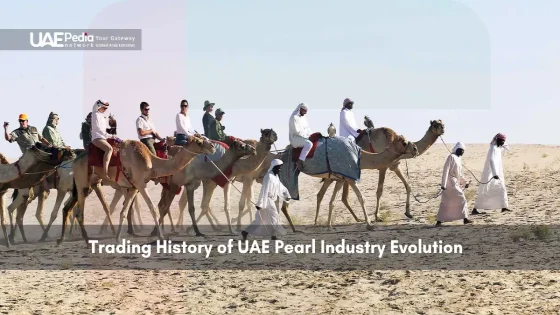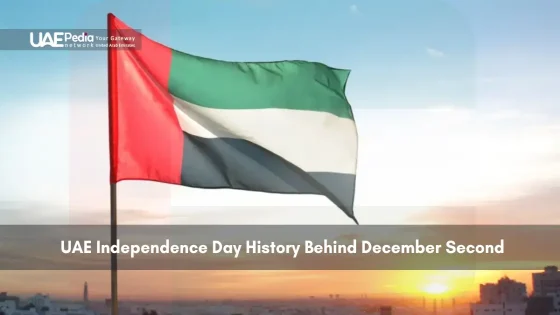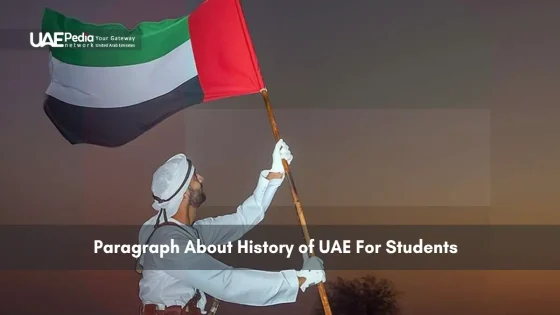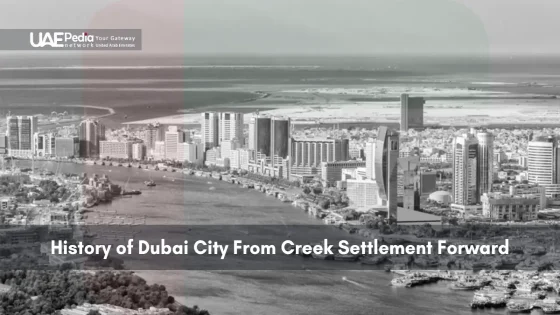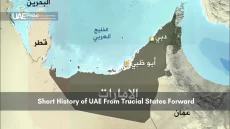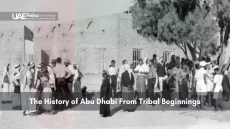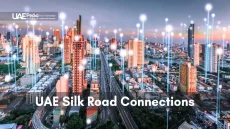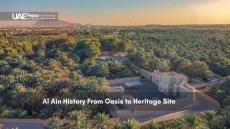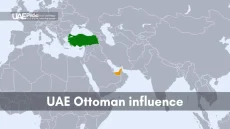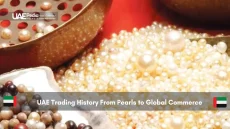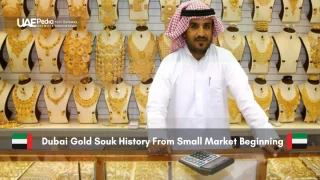What if the coffee pot on your kitchen shelf held clues to a 125,000-year story? The dallah—featured on the United Arab Emirates’ currency—isn’t just decor. It’s a portal to understanding how ancient traditions shape modern life in the Arab Emirates.
This desert region cradles one of humanity’s oldest continuous narratives. Archaeologists uncover stone tools alongside pearl diving relics, revealing how innovation thrived here long before skyscrapers. From Bronze Age traders to Bedouin poets, each era left fingerprints on today’s national identity.
Three distinct threads weave through the Emirates’ cultural tapestry:
- Crossroads creativity: Persian sailing routes, Islamic architecture, and Arabian storytelling merged here
- Living symbols: Historic forts like Al Jahili stand beside contemporary art districts
- Future-forward preservation: Digital archives protect fragile manuscripts while festivals revive fading crafts
We’ll trace how the Trucial States’ past informs sustainable tourism initiatives and youth programs celebrating Emirati heritage. Ready to explore what makes this fusion of old and new so compelling?
Introduction to the UAE’s Rich Cultural Legacy
Imagine standing where desert sands meet UNESCO-listed oases—this is where a nation’s soul lives. The Emirates’ cultural heartbeat pulses through 18 protected sites, from Al Ain’s Bronze Age tombs to Sharjah’s calligraphy biennales. You’re walking through a living mosaic where Bedouin wisdom shares space with VR heritage tours.
Government programs like the Ministry of Culture’s National Archives digitize fragile manuscripts while training Gen Z as oral history keepers. “We’re not just preserving artifacts,” says a Dubai Culture official. “We’re coding tradition into tomorrow’s language.”
Family bonds anchor this legacy. Weekly majlis gatherings still shape community decisions, echoing the collaborative spirit that built pearl-trade empires. Grandmothers teach henna art in shadowed courtyards as children swipe through heritage apps.
Abu Dhabi epitomizes this duality—marble-clad museums housing 7th-century poetry beside AI-curated exhibits. The country’s eastern area whispers tales through restored forts, while urban centers reimagine tradition through sustainable architecture.
This isn’t nostalgia. It’s a blueprint for how societies thrive when roots fuel innovation. Ready to trace how ancient trade routes became 21st-century cultural highways?
Tracing Ancient Beginnings: From Prehistoric Roots to Bronze Age Societies
What if the shell necklace you bought at a market held secrets from 5,000 years ago? The region’s earliest residents left clues in stone tools and pottery shards that rewrite what we know about desert survival.
Discovering Early Human Habitation and Trade
At Jebel Faya, archaeologists found 125,000-year-old hand axes—proof humans thrived here during ice ages. By 3000 BCE, Umm Al Nar Island became a trade hub. Digs uncovered Mesopotamian seals and Indus Valley jewelry in its tombs.
Bronze Age builders engineered circular tombs with ventilation shafts. These structures reveal how early architecture adapted to harsh climates. “Their craftsmanship rivals Egypt’s pyramids,” notes a researcher from the Abu Dhabi Department of Culture.
| Culture | Timeline | Key Artifacts | Trade Partners |
|---|---|---|---|
| Umm Al Nar | 2600–2000 BCE | Copper tools, pearl jewelry | Sumer, Indus Valley |
| Wadi Suq | 2000–1300 BCE | Decorated pottery, bronze weapons | Oman, Mesopotamia |
The Umm Al Nar and Wadi Suq Cultures
Umm Al Nar’s seafaring traders exported copper across the Gulf. Their distinctive circular tombs dot the area around modern Abu Dhabi. Later, Wadi Suq communities crafted delicate painted pottery—a shift from stone to artistic expression.
These cultures didn’t just survive—they innovated. Underground irrigation systems from this era still influence desert farming today. Every clay tablet and fishing net fragment shows how ancient life shaped this crossroads of civilizations.
The Transformation of Society in the Islamic Era
Ever wondered what desert winds whispered as camel caravans carried new ideas across the sands? The 7th century reshaped this region’s society like monsoon rains transforming wadis. Within decades, communities embraced Islam—not just as faith, but as a blueprint for governance, trade, and daily life.
Conversion to Islam and the Impact of the Ridda Wars
When messengers brought the Prophet Muhammad’s teachings here, coastal tribes became early adopters. The Ridda Wars—a series of 632 CE conflicts—played chess with allegiances. Local leaders who pledged loyalty strengthened tribal unity across the trucial states. “These battles weren’t just about swords,” notes a Sharjah historian. “They wove separate threads into one fabric.”
Islamic Trade Routes and Port Cities
Ports like Julfar (today’s Ras Al Khaimah) buzzed with ships bound for China and Zanzibar. Merchants traded pearls for porcelain, spices for stories. Architecture evolved too—mosques with minimalist designs replaced older temples, their qibla walls pointing travelers toward Mecca.
Centuries later, you can trace this influence in forts like those in Al Ain. Their angular watchtowers and shaded courtyards show how form met function in desert heat. As caravans moved goods, they carried ideas—transforming the trucial states into a crossroads of faith and commerce.
Architectural Insights: From Traditional Wind-Catchers to Modern Landmarks
What if your home could breathe? For centuries, Emirati builders solved desert living puzzles with ingenious designs. Their legacy whispers through shaded courtyards and sings from wind-towers—an architectural playbook still shaping skylines today.
Classic Emirati Designs and the Influence of Persian Styles
The iconic barjeel wind-catchers arrived via Persian Gulf traders, evolving into local masterpieces. These “air conditioners of antiquity” funnel breezes into thick-walled homes. Modern architects now reinterpret them—like the Louvre Abu Dhabi’s lattice dome mimicking ancient airflow patterns.
Courtyard houses tell another story. Their inward-facing layouts created private oases, a design ethos echoed in contemporary villas. “Our ancestors built communities, not just buildings,” notes a Sharjah preservationist. “Every archway served both beauty and purpose.”
Preservation of Historical Structures in Cities like Al Ain
Al Ain’s mud-brick forts stand as time capsules. Teams use 3D mapping to restore 19th-century watchtowers, blending traditional materials with laser scanning. In Abu Dhabi, Qasr Al Hosn’s transformation from 18th-century fortress to cultural hub shows how old stones teach new lessons.
Three principles guide these efforts:
- Climate-smart retrofitting (think palm-frond insulation meets solar panels)
- Community-led restoration workshops
- Digital twins of fragile sites for future study
From wind-cooled homes to AI-monitored heritage sites, each structure becomes a family album writ large—proof that smart design transcends centuries.
The Cultural Landscape: Arts, Literature, and Traditional Performance
What if the rhythm of a drumbeat could unlock centuries of stories? Across desert gatherings and coastal festivals, artistic expression pulses like a heartbeat. This isn’t just entertainment—it’s how generations have shared wisdom, celebrated victories, and preserved their voice.
The Legacy of Nabati Poetry and Storytelling
Bedouin poets once transformed campfires into classrooms using Nabati verse. This oral tradition turns everyday words into lyrical maps—guiding listeners through love, loss, and lunar landscapes. “Our poems are time capsules,” says Al Yazia, a poet from Abu Dhabi. “They carry the scent of rain on dry earth.”
| Art Form | Key Features | Modern Guardians |
|---|---|---|
| Nabati Poetry | Improvised verses, desert themes | Youth spoken-word clubs |
| Ayyala Dance | UNESCO-listed group performance | Coastal community members |
| Harbiya Music | Percussion-driven storytelling | Women’s heritage ensembles |
Dramatic Arts, Music, and Folk Dances
Watch the Ayyala dance at a Liwa festival—swords clink as rows of men sway like date palms. Women’s Al Waha songs turn water-collecting chores into harmonies. These arts aren’t frozen in time. Teen TikTokers remix folk rhythms, while theater groups stage historical epics with holographic backdrops.
“Every drum pattern is a coded message from our ancestors. When youth learn them, they become living bridges.”
Community members fuel this revival. Grandmothers teach embroidery patterns that mirror desert dunes, while uncles coach kids in camel poetry contests. In markets, you’ll find henna artists blending ancient symbols with emoji-inspired designs—proof that tradition thrives when it breathes.
Evolution of Lifestyle: Traditional Clothing, Cuisine, and Sports
Ever notice how everyday choices become time machines? In this desert-meets-metropolis landscape, what you wear, eat, and play bridges centuries. Let’s unpack how threads of tradition weave through modern lifestyle choices—from market stalls to mall food courts.
Emirati Attire and the Role of Heritage in Fashion
The flowing kandura for men and elegant abaya for women aren’t costumes—they’re climate-smart couture. Designers now reimagine these staples with moisture-wicking fabrics and minimalist embroidery. “Our clothes tell stories,” says a Dubai-based tailor. “This collar shape? It comes from pearl divers needing neck protection.”
| Traditional Element | Modern Adaptation | Purpose |
|---|---|---|
| Kandura’s loose fit | Laser-cut ventilation panels | Heat management |
| Abaya’s black fabric | Solar-reactive color-changing dyes | Style versatility |
| Shemagh headgear | UV-protective materials | Sun protection |
The Influence of the Pearling Industry and Falconry
Before oil, pearls fueled the economy. Divers’ weight stones now decorate coffee tables, while oyster motifs grace skyscrapers. This legacy lives in family heirlooms and cultural identity.
Falconry remains the ultimate sport of patience. Modern enthusiasts use GPS trackers, but the bond between hunter and bird stays sacred. Weekend competitions see men and kids cheering like it’s a soccer match—just with $50,000 avian athletes.
| Traditional Practice | Modern Twist | Community Role |
|---|---|---|
| Pearl diving | Luxury jewelry brands | Economic heritage |
| Falconry | Conservation programs | Ecological balance |
| Date harvests | Gourmet food festivals | Culinary tourism |
At dinner tables, meat-centric dishes like machboos get vegan makeovers. Grandmas approve—as long as the cardamom coffee stays traditional. Here, every meal and match honors the past while sprinting toward tomorrow.
Understanding uae history and culture
How does a nation carry 125,000 years of stories in its daily rhythm? Step into Abu Dhabi’s Cultural Foundation, where toddlers sketch Bronze Age pottery shards while elders debate AI’s role in preserving dialects. This isn’t just a country—it’s a living scrapbook where every coffee cup and courtyard whispers tales.
In coastal villages, families still gather under ghaf trees for storytelling nights—echoing traditions that predate skyscrapers. “Our home recipes aren’t written down,” shares Mariam, a Sharjah chef. “They’re measured in palmfuls and passed through shared meals.” These moments reveal how people here weave ancient wisdom into modern life.
Three ways heritage breathes in urban spaces:
- Dubai’s Al Fahidi district hosts calligraphy workshops in 19th-century wind-tower homes
- Ras Al Khaimah’s pearl farms now offer VR diving experiences alongside traditional boat-building
- Abu Dhabi’s date markets blend barter traditions with blockchain tracking
Notice how Persian sailing routes influence today’s dhow-shaped museums? Or why camel races pair robotic jockeys with age-old breeding techniques? This area thrives on duality—honoring roots while grafting new branches.
“We don’t inherit culture—we remix it daily.”
From home kitchens preserving saffron-infused recipes to boardrooms quoting Bedouin negotiation tactics, the past isn’t archived—it’s applied. Your turn: What traditions could shape your community’s next chapter?
Heritage Preservation Efforts in the Modern Era
Step into a room where holographic storytellers share tales beside 18th-century coffee grinders. This is how the city of Abu Dhabi bridges eras—merging ancient customs with cutting-edge tech to protect its soul. The government plays quarterback here, funding projects that turn cultural DNA into interactive experiences.
Government Initiatives and Cultural Festivals
Ministry programs train teens to archive oral histories using voice-recognition software. Annual events like Sharjah Heritage Days transform town squares into living museums. Visitors grind spices with augmented reality guides while artisans demonstrate pearl-stitching techniques.
Flagship festivals achieve three goals:
- Revive endangered crafts through maker workshops
- Connect elders with digital-native youth
- Showcase regional diversity via food trails
Museums, Heritage Villages, and Clubs
The Louvre Abu Dhabi’s rain-of-light dome mirrors ancient oasis shade patterns. Meanwhile, Al Ain’s restored forts host astronomy nights using Bedouin navigation methods. Clubs like the Emirates Heritage Culture Association blend family traditions with TikTok challenges—think henna design contests judged online.
| Institution | Location | Focus | Innovation |
|---|---|---|---|
| House of Artisans | Abu Dhabi | Craft preservation | 3D-printed loom parts |
| Dubai Coffee Museum | Al Fahidi | Culinary history | Interactive brewing stations |
| Ras Al Khaimah Heritage Village | Northern Emirates | Architecture | Thermal camera monitoring |
These spaces aren’t time capsules—they’re launchpads. When a grandmother’s embroidery pattern becomes a video game texture, or a falconry chant remixed into a pop anthem, heritage stays vibrantly alive.
Festivals, Events, and Heritage Villages as Cultural Catalysts
Picture this: a moonlit courtyard where grandmothers knead dough while teens film TikTok tutorials on palm-frond weaving. This electric mix defines the Emirates’ festival scene—where centuries-old customs spark new connections. Every year, communities gather at cultural festivals to swap stories, skills, and saffron-infused coffee.
Annual Celebrations and Community Events
Mark your calendar for November’s Qasr Al Hosn Festival—Abu Dhabi’s flagship heritage event. Families race camels crafted from recycled materials, while chefs demo machboos recipes passed through 12 generations. These dates aren’t just fun; they’re glue binding neighborhoods across shifting landscapes.
At Sharjah’s Heritage Days, watch blacksmiths forge tools beside robotics students. “We’re showing kids that innovation needs roots,” says festival organizer Amal. Her team pairs VR pearl-diving simulators with oral history recordings—bridging tech and tradition seamlessly.
Three ways these gatherings drive change:
- Reviving nearly lost arts like Al Sadu weaving through hands-on workshops
- Creating intergenerational dialogue via cooking competitions and poetry slams
- Showcasing regional diversity through music fusion stages
Don’t miss heritage villages like Al Ain Oasis. Their reconstructed homes let you grind wheat in 19th-century mills or barter spices in a souq frozen in time. As sunset paints the dunes gold, you’ll grasp how shared values of hospitality and resilience shape tomorrow’s blueprints.
Reflecting on the UAE’s Legacy and Future Cultural Preservation
Every sunset over the dunes writes a new chapter in an ancient story. The seven emirates’ journey—from Bronze Age trade hubs to visionary modern states—reveals how communities thrive when tradition fuels progress. Families here don’t just inherit customs; they adapt them, whether through grandmothers teaching embroidery stitches or teens coding heritage apps.
Historic sites like Al Ain’s forts and Nabati poetry’s rhythmic verses remain living libraries of identity. These elements shape a society where camel races coexist with AI-curated museums. Yet rapid growth brings challenges: how to protect fragile artifacts while nurturing creative reinterpretations?
The answer lies in collective action. Communities balance preservation with innovation, like using 3D scans to restore mud-brick towers or hosting fusion music festivals. Abu Dhabi’s cultural hubs exemplify this, blending archaeological finds with interactive tech.
Looking ahead, initiatives like the UAE Vision 2031 offer a forward-thinking roadmap. By prioritizing education and sustainable tech, the region ensures traditions evolve without losing their soul. This approach doesn’t just safeguard the past—it redefines what heritage means for future generations.
From the Arabian Peninsula’s shores to the Arab world’s bustling cities, time proves cultures endure when they breathe. Here, every century-old recipe shared or restored watchtower visited becomes a bridge between eras. Our task? Keep walking—and listening—as the story unfolds.
Through initiatives like restoring forts in Al Ain, protecting archaeological sites such as Hili, and hosting festivals like Qasr Al Hosn, the UAE prioritizes cultural identity. Museums like Louvre Abu Dhabi and heritage clubs also teach traditional skills, ensuring younger generations value their roots while embracing innovation.
Families anchor cultural values through gatherings in the majlis (social space), sharing meals like machboos (spiced rice dishes), and oral storytelling. Elders pass down Nabati poetry, pearl-diving histories, and Bedouin customs, creating a living bridge between past and present lifestyles.
These activities honor the desert survival skills of earlier generations. Falconry reflects the bond between humans and nature, while camel racing—now using robot jockeys—blends tradition with tech. Both feature in festivals, highlighting adaptability without losing heritage’s essence.
Coastal ports like Julfar (Ras Al Khaimah) traded pearls and textiles, bringing Persian wind-tower designs for cooling homes. You’ll see this in Bastakiya (Dubai) and restored buildings in Sharjah, where coral stone and palm fronds meet ornate geometric patterns from across the Indian Ocean.
Date palms provided food, shade, and materials for crafts—integral to survival in arid climates. Today, over 40 varieties are grown, served with Arabic coffee as a hospitality symbol. The Liwa Date Festival celebrates this staple, linking farming traditions to community pride.
Calligraphy merges Islamic themes with abstract expressionism, while Al Ayala dance rhythms echo African drumming. Poetry slams and henna art showcase Bedouin-Arab roots, and contemporary galleries in Saadiyat Island fuse these elements with global trends, proving culture evolves without erasing its layers.
